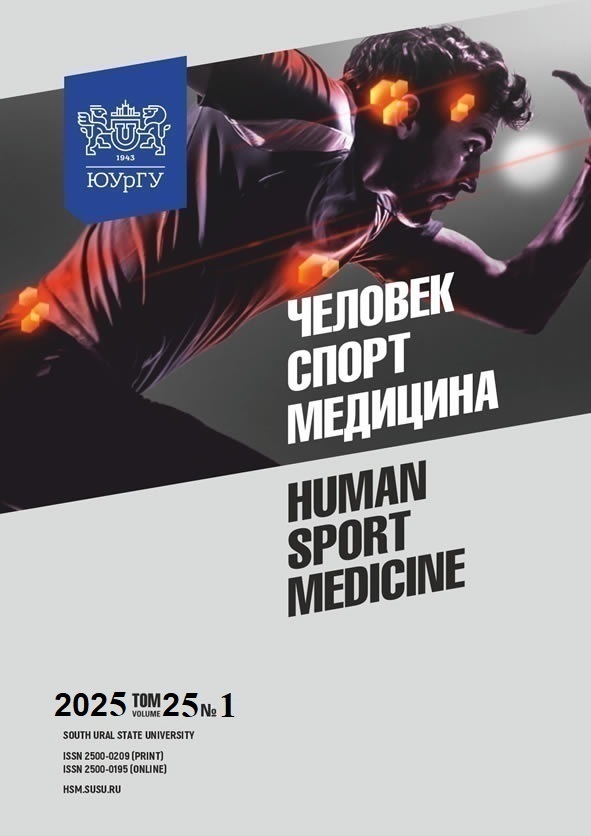HEMODYNAMIC RESPONSE TO ORTHOSTATIC STRESS DURING THE PREPARATORY PERIOD IN CROSS-COUNTRY SKIERS WITH DIFFERENT LEVELS OF PHYSICAL PERFORMANCE
Abstract
Aim: this study aimed to identify general and specific characteristics of hemodynamic responses to an orthostatic test in cross-country skiers with pronounced baseline vagotonia, stratified by their level of physical performance. Materials and methods. The study was conducted during the preparatory period. The sample included 20 skilled cross-country skiers (n = 20; age M ± σ 20.06 ± 2.07 years), who were divided into two groups (leaders and reserves) based on their relative speed (Vrel) achieved at the fifth stage of the ergometer test. Parameters that reflect central and peripheral hemodynamics during active orthostasis were evaluated. Results. The most pronounced response to orthostasis among leaders was observed during the second phase of the preparatory period, characterized by a significant increase in diastolic blood pressure (19.7%, p < 0.001). Among reserves, the greatest increase was observed in cardiac output during the first phase of the preparatory period (58.5%, p < 0.001); systolic blood pressure was significantly lower during the third stage compared to leaders. Conclusion. The quantitative changes and their direction with respect to central and peripheral hemodynamics among leaders following a two-minute orthostatic test correspond with normal orthostatic tolerance. In contrast, among reserves, the results obtained indicate reduced orthostatic tolerance.
References
References on translit
Copyright (c) 2025 Human. Sport. Medicine

This work is licensed under a Creative Commons Attribution-NonCommercial-NoDerivatives 4.0 International License.















